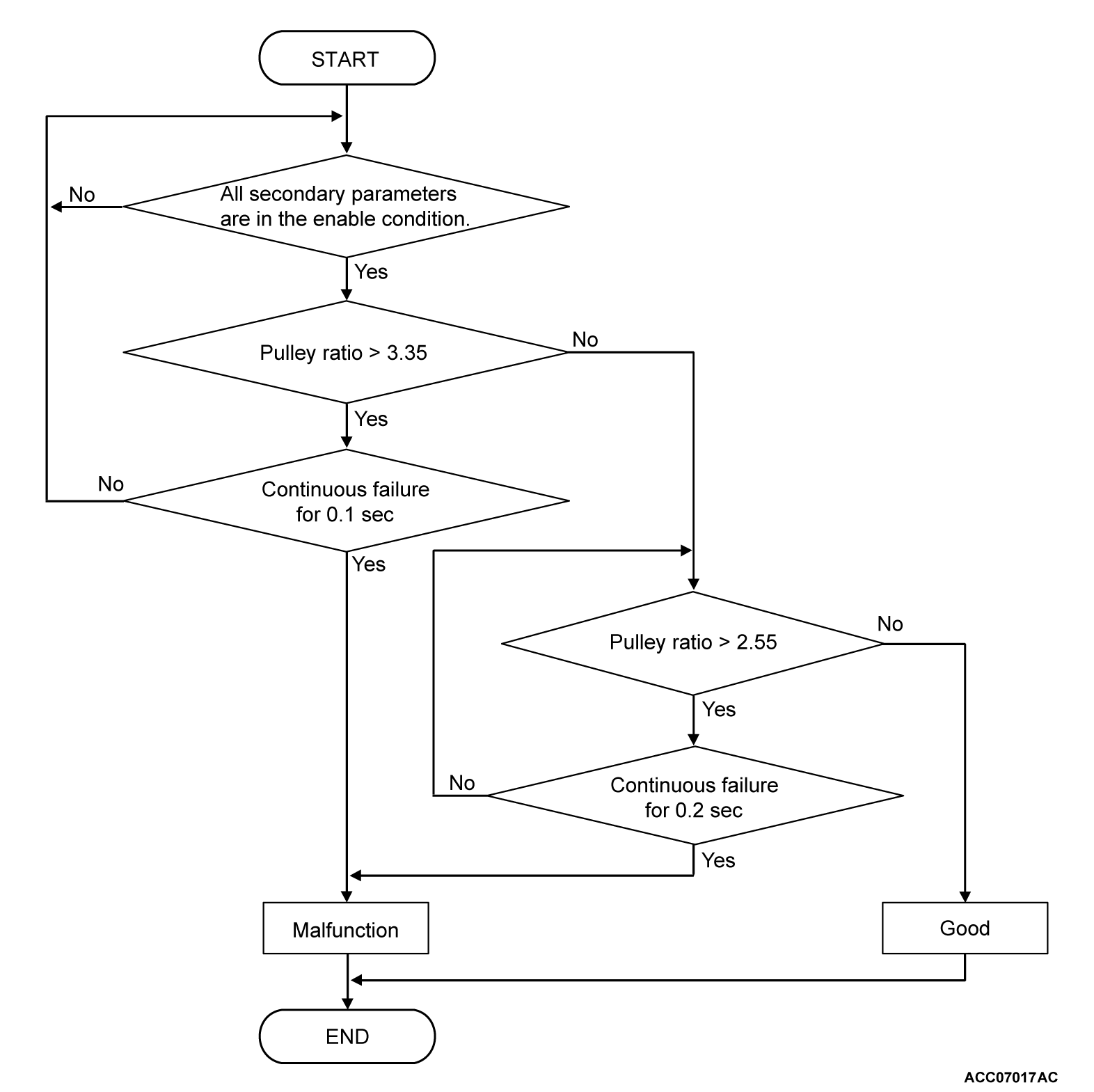DTC P0746: Abnormality in Hydraulic Control System Function
DIAGNOSTIC FUNCTION
If the pulley ratio, which is calculated according to the primary pulley speed and the secondary pulley speed, exceeds the standard value, the TCM determines that the line pressure is abnormal.
DESCRIPTIONS OF MONITOR METHODS
- The ratio between the primary pulley speed and the secondary pulley speed is 2.55 or more for 0.2 seconds, or 3.35 or more for 0.1 second.
MONITOR EXECUTION
- Transmission range: "D", "R" or "L"
- Primary speed: 500 r/min or more
- Acceleration: -0.05 G or more
- Engine speed: 450 r/min or more
MONITOR EXECUTION CONDITIONS (OTHER MONITOR AND SENSOR)
Other Monitor (There is no temporary DTC stored in memory for the item monitored below)
- P0705: Malfunction of transmission range switch
- P0715: Malfunction of primary pulley speed sensor
- P0720: Abnormality in output speed sensor
- P0791: Malfunction of the secondary pulley speed sensor
- U0001: Malfunction of CAN communication
- U0100: CAN time-out error (engine)
Sensor (The sensor below is determined to be normal)
- Transmission range switch
- Primary pulley speed sensor
- Output speed sensor
- Secondary pulley speed sensor
DTC SET CONDITIONS
Check Conditions
- Transmission range switch position: "D", "R" or "L"
- Engine speed: 450 r/min or more
- Primary pulley speed: 500 r/min or more
- Acceleration: -0.05 G or more
Judgment Criteria
- Pulley ratio (primary pulley speed/secondary pulley speed) more than 2.55 for 0.2 second.
- Pulley ratio (primary pulley speed/secondary pulley speed) more than 3.35 for 0.1 second.
OBD-II DRIVE CYCLE PATTERN
The vehicle is driven for at least 10 seconds with the accelerator opening angle at 20 percent or more.
PROBABLE CAUSES
- Malfunction of the transaxle assembly (Faulty line pressure solenoid valve or valve body assembly)
DIAGNOSIS
STEP 1. Check the following connector.
- CVT assembly connector
Check the terminals for a contact status problem and internal short circuit.
Is the check result normal?
 Repair the faulty connector.
Repair the faulty connector.STEP 2. Measure the output wave pattern of the line pressure solenoid valve at TCM connector (PLLS terminal).
(1) Connect the CVT assembly connector.
(2) Transmission range: "P" range
(3) Engine: Idling
(4) Connect an oscilloscope, and measure the voltage between TCM connector PLLS terminal and body ground.
Is the check result normal?
STEP 3. Symptom recheck after erasing DTC.
(1) Erase the DTC.
(2) Turn the ignition switch to the "LOCK" (OFF) position, and then wait for one minute. Then drive the vehicle until the engine has been warmed up.
(3) Check if the DTC is stored.
Is the DTC stored?
![[Previous]](../../../buttons/fprev.png)
![[Next]](../../../buttons/fnext.png)


